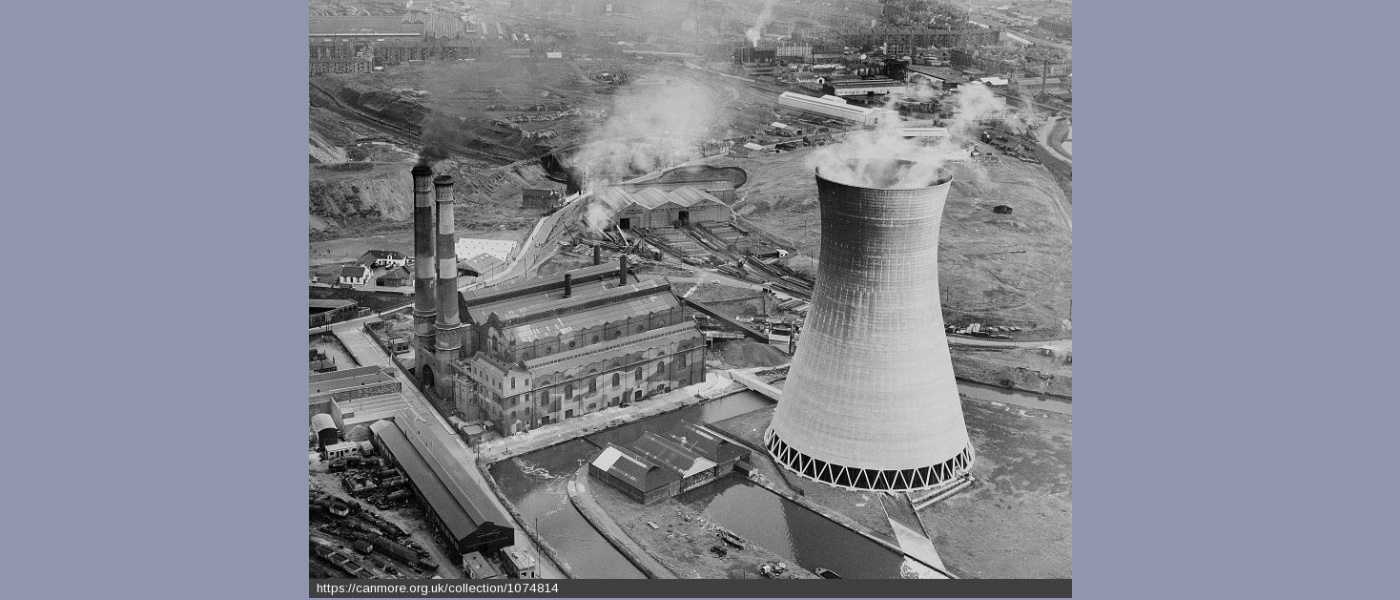Pinkston in camouflage, from the north-west (late 1950s?)

The power station at Pinkston was originally constructed of red brick from 1900-1901. The cooling tower was added in 1952-54. In this aerial image, the camouflage paint applied to the power station during the Second World War is still visible. The canal and railway can also be seen, while in the distance, smoke rises from the chimneys of rows of tenements and houses. In 2016, archaeological investigation in this area as part of development at Port Dundas found that the base of the cooling tower was formed of reinforced concrete 0.35 metres thick (Kirby 2016). The cooling tower was built on top of some of the infrastructure beside the canal; the canal basin itself had been filled in by about 1960. This connection with the canal indicates that this was a busy place even before it became a large area of housing. It was well connected – railway lines, the canal, roads and later the M8 corridor. All of these served to connect these places across west central Scotland but later came to cut off residents from the city centre.

